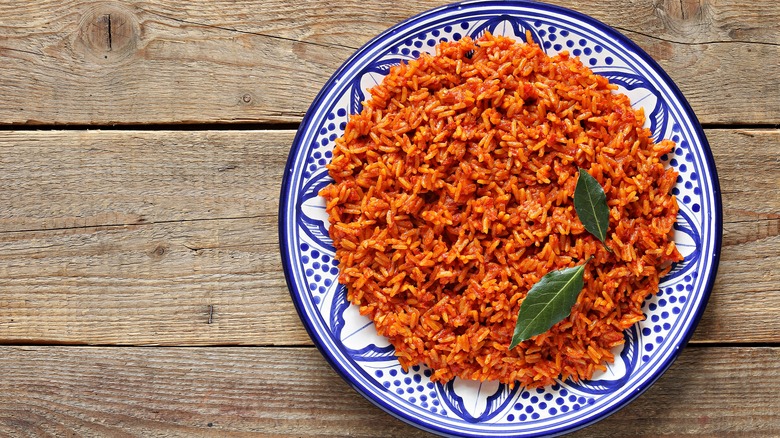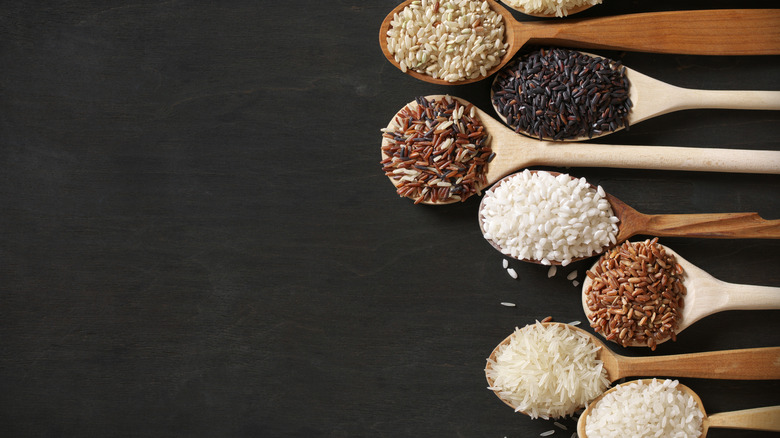How To Choose The Best Grain When Making Jollof Rice
Jollof rice is an iconic dish that originated in West Africa but spans the historical and geographical trajectory of the African diaspora. It is a centuries-old staple in Nigeria, Senegal, Ghana, and Cameroon, and as with most multinational culinary customs, there are countless varieties of jollof rice. Spices, add-ins, and even the type of rice change from country to country, region to region, and family to family. But while types of rice vary, most recipes call for long-grain rice. Rice grains fall under three categories: long, medium, and short grain. Medium and short-grain rice have shorter, rounder shapes and more starch, making them clumpier, creamier, and softer than long-grain rice. Long-grain rice retains its shape well and cooks into a fluffy dish without the grains sticking or clumping.
In a dish like jollof rice where the cooking liquid is an ultra-thick tomato and chili stew, long-grain rice will absorb the flavorful liquid without turning soft and mushy. If you use short or medium-grained rice, the extra starch content will act as a barrier for flavor and liquid absorption. In a dish like risotto or paella, you cook the rice uncovered, which prompts excess liquid to evaporate. However, jollof rice cooks in a pot with a double seal of foil and a lid, slowly cooking the rice to optimize its flavor.
Long-grain rice varieties
Long-grain rice varieties encompass both neutral and flavorful types of rice. Common types of long-grain rice include basmati, jasmine, and American long-grain. You can find brown rice in various long-grain varieties as well. Brown rice will hold its shape well in a slow-cooking dish like jollof rice as it generally requires longer cooking times. Plus, it has a deep earthy flavor that would complement the umami-rich tomato paste and savory curry powder.
Basmati rice has a distinctly nutty and fragrant flavor that would taste delicious with the aromatic ginger, chili, and spice-infused tomato stewing liquid. Of course, a more neutral American long grain or jasmine rice would let those flavors speak for themselves. A helpful hack to avoid clumping or mushy rice is to rinse the rice, ridding it of any excess starch.
No matter which type of rice you use, it's crucial to use the exact measurements stated in your recipe. Even if the ratio of liquid to rice seems smaller than in a conventional rice dish, jollof rice's slow-cooking method ensures that the rice will cook thoroughly as it absorbs all the stew's flavors. Adding more water will have disastrously mushy results. Trust the process, and don't lift the lid.

